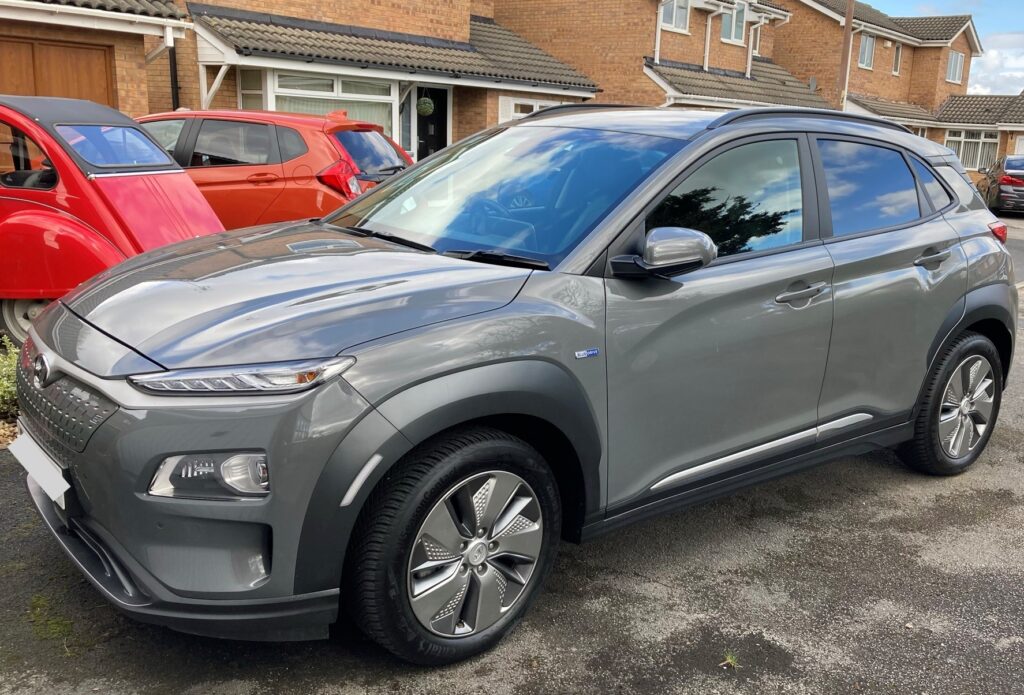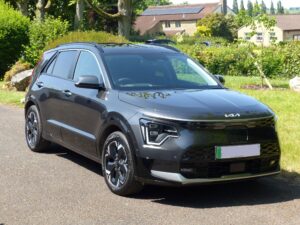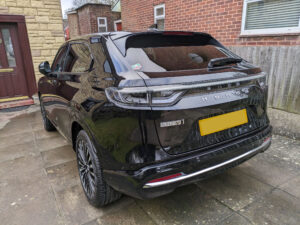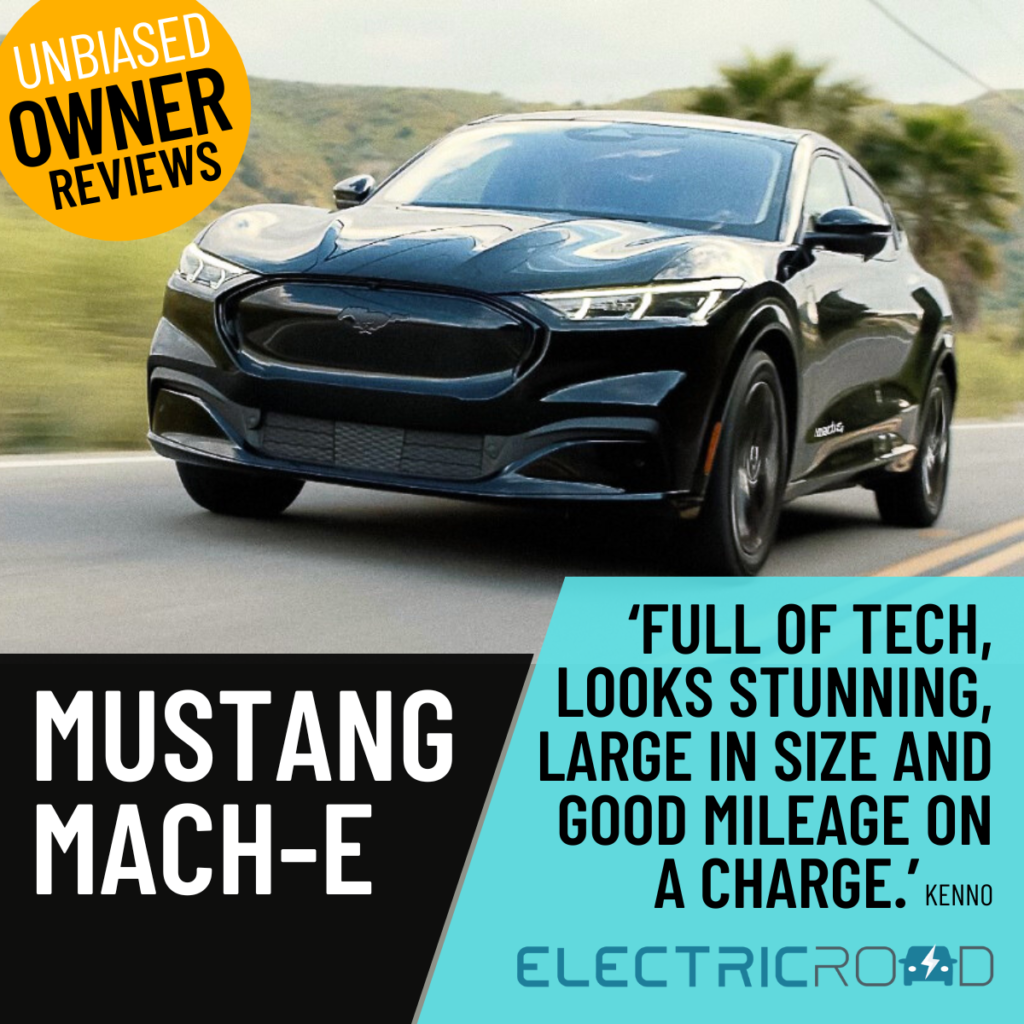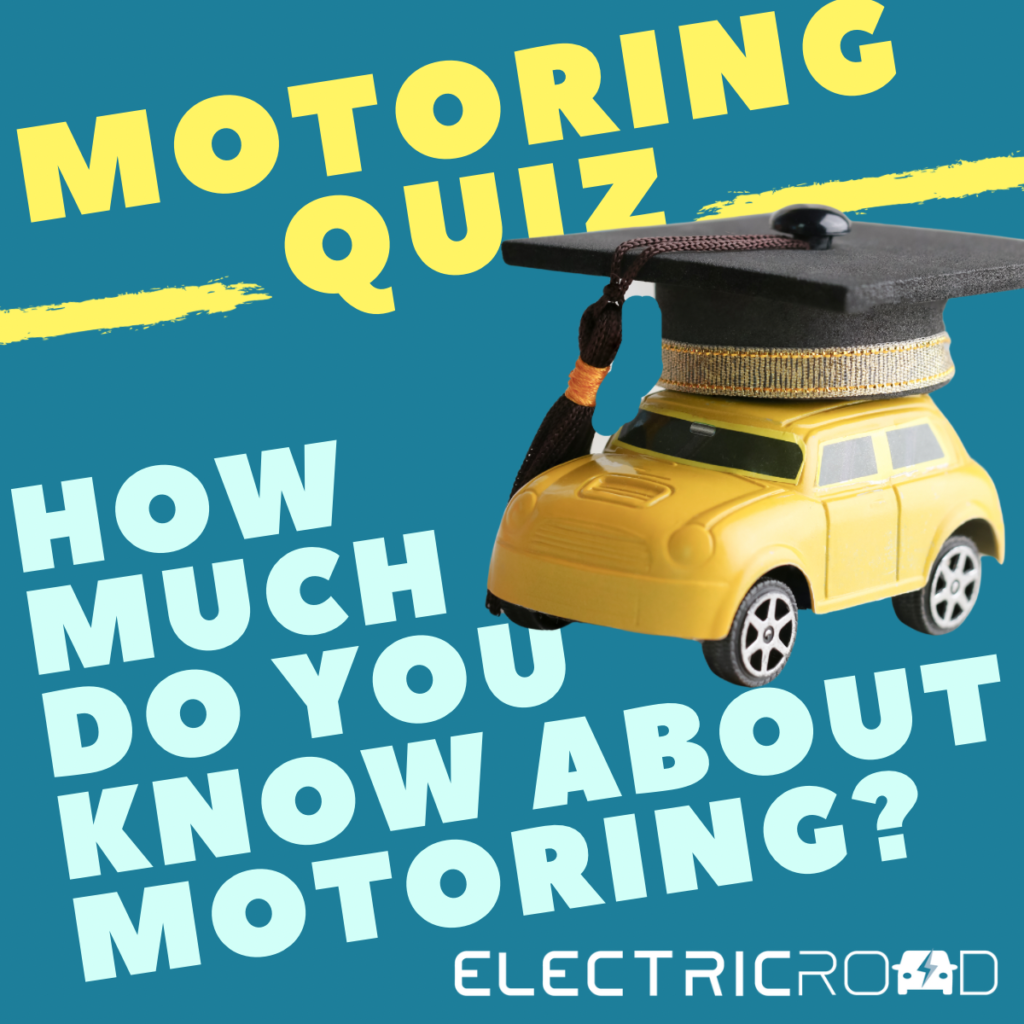Frogletsmum drives a Hyundai Kona Electric Premium SE 64kWh 2019 electric car.
This is Frogletsmum’s first electric car, they’ve owned the Hyundai Kona Electric for 1-2 years and drive 5,000-10,000 miles annually. The current mileage of the car is between 10,000-20,000 miles and they achieve 250 miles range from a full charge.
Why did you choose the Hyundai Kona Electric?
It was time to change my car. I needed a higher car due to knee problems and I also wanted an EV. Although most of my mileage is local driving, once or twice a month I do a long journey, so I needed a car with a good range. At the time of buying, this was one of the best in my price range. I am not usually that bothered about onboard tech but this car has actually got good, useful features along with a decent sized screen.
Most of my previous cars have been Japanese made and I’ve never owned a Hyundai before. However, I do have friends who own ICE Hyundais and have been very pleased with them. Although I did not buy from my local dealer, I do use them for servicing as they came highly recommended.
Sign-up to Electric Road now to receive a FREE ‘Hyundai Kona Electric Guide’, a weekly Newsletter and to win some great prizes!
Positives – List 3 or more reasons why you love the Hyundai Kona Electric
- Safety features
- Heated steering wheel
- Choice of drive modes
- Heated/cooled seats.
Negatives – List 3 or more things that you really don’t like about the Hyundai Kona Electric
- Door pockets are designed to hold a flask only – not useful and even the flask sits at an angle and will only take slim flasks
- Storage under the central console is disappointing as it’s hard to access
- Removal of back shelf support is difficult- in fact, I haven’t managed it yet, which makes putting large items in the boot hard. I don’t need a massive boot, so am happy with it in general, it’s just the odd occasion when I need more room.
- The manual – it’s the size of a door step! Although mostly well laid out, it is difficult to find some items and the use of American type terminology doesn’t help this Brit.
- Very little moveable direction of the air vents. As a result, the demisting of the front side windows is poor.
Have you experienced any faults with the car? If so, what have they been?
Twice I’ve had to have the AA out to reset the onboard computer. There has been no problem prior to this happening. I have literally got in to my car and when I have turned on the EV, the battery warning light is on (with associated dire warnings). There seems to be no way I can correct this myself and nobody can tell me why it has happened. The first time the AA engineer expressed the opinion that the tech was too far advanced of what the car could actually do.
Given that each time the engineer has literally plugged in an iPad and accessed something to reset the computer, why is this not available to the user? Given that the car is immobilised and the wait for an engineer could be lengthy, this could put the driver in danger. I still have no idea what causes this.
What are the standout technological features of your Hyundai Kona Electric?
- Blind spot warning system is brilliant
- Cordless charging for my phone
- Front collision warning
- Warning when drifting out of lane.
Surprise us! Tell us something people wouldn’t readily know about this Hyundai Kona Electric
- The heated steering wheel is absolutely the bees knees!
- There is a useful tray in the boot, under the floor, but it could do with being a little deeper to perhaps take a spare charging cable.
What electric car(s) are you interested in next and why?
I would happily choose the same car again (but newer model) or a Tesla because public charging is so much easier. Also, the Tesla automatically turns off when exiting the car which is useful, as well as the driverless reversing to get out of tight parking spaces or the garage. Having technicians rectifying faults remotely is also attractive. But all this comes at a hefty price that I’m not sure I’d be willing to pay.
Outline both positive & negative elements of your home charging unit
I have a WallBox Plus charger – it’s biggest downside is the requirement to connect by Bluetooth before the wi-fi connection. I can be stood right next to the unit sometimes and it just won’t connect. Plus points are good customer service (but it’s based in Spain, so sometimes a time difference problem). I like the fact it’s not too complicated to use (main reason I chose it), I don’t want all sorts of irrelevant data. I just want to charge my car, see the progress and record how much it’s cost me. It does offer a scheduled charging option but I have not used this.
Outline both positive & negative elements of your electricity supplier & tariff
Like many people at present, I have been forced onto a standard variable tariff with British Gas, which is not EV charging-friendly. However, given that I only need to recharge once or twice a month it’s not worth opting for a more expensive tariff with off-peak charging for EVs at this time.
What public charging networks would you recommend to others and why?
- InstaVolt – by far the best, both for cost and reliability
- IONITY are also reliable but more expensive (and quicker if your car has the capability)
- Gridserve – are OK at the larger facilities but invariably not working at smaller facilities. Given they have the motorway franchise, the facilities at most motorway services are dire. There never seems to be more than 3 type 2/CCS and 1 CHAdeMO. They work as 2 outlets from 1 unit. So if another person is using it and has opted to pay by contactless card, then a second person can only pay by RFID card. Seems crazy. My experience has also been that if one car is using the unit then a second connection will often show as ‘waiting for power’ and is therefore not working.
- bp pulse is expensive and they don’t make it easy to use. Despite big notices saying you can use contactless cards, the reality is you can only use a contactless card through the app, which you have to preload. If you mess up trying to use the unit, it switches itself off and when you call the help number you speak to someone in an echoing bunker in Ireland.
Outline both positive & negative elements of your insurer
I use Aviva as at the time of my renewal they offered the best cover for the cheapest price. In fact, it was cheaper than my previous 12 year old petrol self-charging hybrid. As I’ve had no reason to claim, I cannot comment further.
Itemise how much money you’re saving each month owning & running your Hyundai Kona Electric
£50
See other owner reviews here


